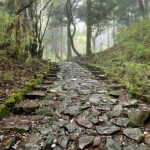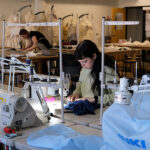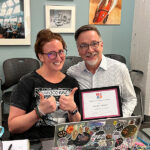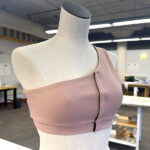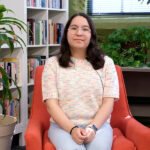Critical Approaches to Abstraction
This course will topically engage abstraction as defined by a range of artistic practices and critical interventions. We will establish a range of current tendencies and trace them back to their historical lineages. Recognizing the complicated history within abstraction, students will engage relationships between past and present. Discussions will include: Hybrids, Opticality and Rhythm, Color and Structure, Found/Eccentric Abstraction, Form/Space/Scale, The Act of Painting, and more. Although this is a studio class, students will encounter a number of critical texts. Through reading, discussion, lecture, and critique, students will become aware of the role theory and history can play in the art making process. This in turn will allow students to develop a discerning way in which to approach their respective practices.
We will discuss issues surrounding abstraction via various media and approaches. Similarly, students will be encouraged to conceive of their projects via media best suited to effectively communicate their artistic pursuits.
Inhabiting Space Through Printmaking
The world we inhabit is filled with printed matter that not only acts as image, but also defines the space we inhabit. Billboards, wallpaper and decoration, signs, stencils and stickers, the clothing we wear, all of these things and more are constructed from matrices and exist in multiple. This studio intensive class will explore the possibilities of print, paper, and textile as materials for initiating installations, site-specific interventions, costumes, and happenings. Students will be introduced to digital practices employed in printmaking to produce images and surfaces for these pursuits while engaged in the planning of a student driven project that engages their individual pursuits and studio practice in conjunction with the aims of this course. This studio offers a space ideal for collaboration and will culminate with the possibility of working with students engaged in time-based media for possibilities in documentation, performance, and video based work. The studio work will be supported by historic and contemporary context through lectures, demonstrations, and readings. We will examine the works of artists such as Regina Silveira, Elizabeth Dove, Wolfgang Tillmans, Alison Knowles, and Adriane Colburn.
Photography in Black & White
Until the 1970’s, fine art photography was largely monochromatic. It was also an analog process. These traditional forms of photography form the basis for how we work today. Black and white photography is both historically important and a uniquely beautiful form of image making. This class will investigate the exquisite qualities of both silver gelatin and older processes like Salt Prints, Kallitype and Cyanotype. Exploring antique processes will necessitate the use of some digital strategies, which, ironically, will strengthen both the student’s digital and analog practice. Students will be challenged to meaningfully integrate traditional forms with contemporary practice through the creation of a substantial project.
Video Explorations
This course explores the idea of video as a purely visual pursuit. Both the instructor and the student will determine most projects. The class will be shaped somewhat like an independent study and is aimed primarily at students who investigate video as a part of their visual concerns rather than a primary involvement. The basics of Final Cut will be taught along with the basics of a sound program and After Effects. The main goal of this elective is to focus on the visual aspect of video. The course will be a freewheeling and unpredictable experience as well as a course than can assist in finding a missing piece for a possible multi-layered investigation. This is a video course that addresses both idea and concept as a purely visual pursuit.
Interdisciplinary Drawing
In this class we will bridge drawing with other disciplines. Other media such as painting, printmaking, sculpture, and photography can be considered not only in development from drawing, but also drawing as extended beyond a flat two-dimensional surface. Supports, grounds and color will be investigated in process and material, as well as other needs that students might find necessary. Found objects, molds and cast materials might also be investigated. Students will have leeway to entertain their own interdisciplinary interests and pursuits as applicable to the course.
Post-Studio Practices
Students investigate idea-driven, post-studio practice through a series of projects that emphasize relationships between traditional and untraditional methodologies. The class uses a range of contemporary practices—Post-Studio, Intervention, Appropriation, Institutional Critique, Research-based, Collaboration, and Super-Hybridity—as thematic context. Students explore the intention, craft, criticality, expertise, and personal investment that sustain conceptually rich art projects. The class fosters critical examination of both alternative and traditional materials/methodology. It challenges students to develop rigor and methodical process in structuring and executing their work. Comprehensive consideration of materials, process, intent, context, and audience enables students to develop their work with an awareness of how and where that work will be encountered. The class will strengthen student’s personal goals and encourage critical thinking that increases artistic confidence. Readings, lectures, guest speakers, and ongoing discussion of contemporary art practices supplement studio time.
Sculpture: Art in Public Places
This interdisciplinary course investigates our multifaceted relationship as artists in the city. Social practice incorporates art strategies as diverse as urban interventions, utopian proposals, guerrilla architecture, “new genre” public art, social sculpture, project-based community practice, interactive media, service dispersals, and street performance. This semester, our emphasis will be on two forms: inquiry and activity in self-guided works as well as collaborative investigations. Course content is wide ranging but will include collecting community stories, personal histories, exploring the cultural impact of place and unfolding the curiosities around locality. Students will be actively involved in determining what form the public component takes.
Art in Design, Design in Art
This course will present crossover discourse and challenging projects based on communication design principles and critical art theory. We will delve into how images relate ideology with respect to their intent and purpose. Although the fields of fine art and design are specialized studies, they interrelate and are in dialogue on the continuum of visual culture. Two-dimensional design principles guide our ability to understand visual information, from brand transmission to experimental typography. All students can benefit from scrutinizing the visual information that surrounds them every day: Our perceptions are also led by our cultural contexts, whose agendas manifest in fine art in ways that are often enigmatic and “extra-visual.” The conceptual space where these modes of comprehension overlap catalyzes cultural identity.
In Action
In Action explores how a physical presence – a subject in motion – operates across film, dance and performance. We’ll look at the physical comedy of Buster Keaton and Katt Williams, the movement techniques of biomechanics and Jerzy Grotowski, the work of Merce Cunningham, the films of the Shaw Brothers of Hong Kong, and others. The course involves reading, writing and producing studio work. Students are asked to bring their own interests and studio practice to the course.
Sculpture Computer Studio
The computer is an ever-expanding tool for multi-disciplinary artists to use to generate new work. Sculpture Computer Studio introduces computer-aided techniques in fabrication, and builds upon the artist’s vision. Students will gain a working knowledge of computer-aided drawing programs and complete small projects that explore the potential range of materials appropriate for this strategy of making. Laser cutting, 3-D printing, and hollow-forming techniques will be learned. Previous knowledge of Photoshop and Illustrator are recommended, but not necessary.

